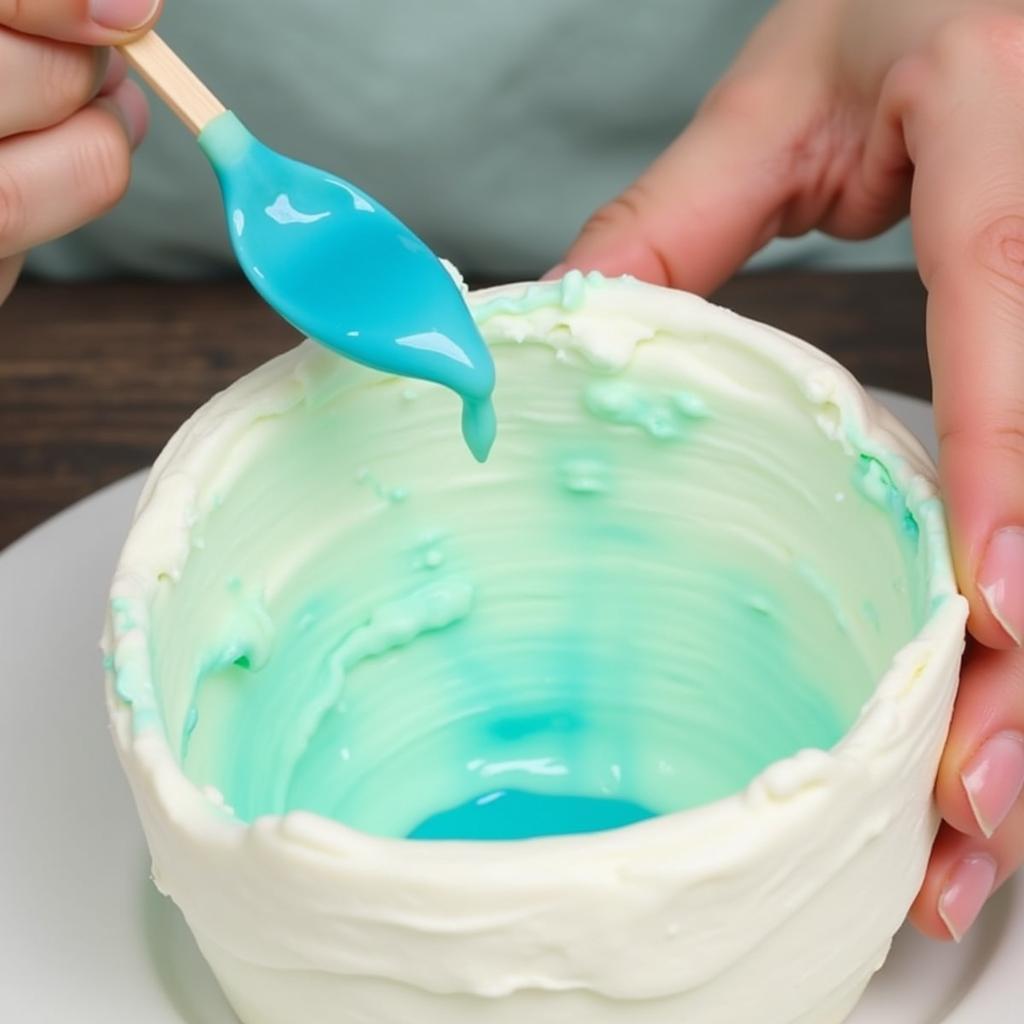Achieving the perfect mint green with food coloring can seem tricky, but with a little guidance, you can create this delightful pastel hue for your cakes, frostings, and other culinary creations. This guide will walk you through the process, offering tips and tricks to ensure your mint green is always on point.
Mixing the Perfect Mint Green: A Step-by-Step Guide
Creating mint green isn’t just about mixing blue and green food coloring. It’s a delicate balancing act that requires precision and a keen eye for color. Here’s a comprehensive guide to help you master the art of mint green food coloring:
- Start with a clean palette: Begin with a white base, such as white frosting, batter, or fondant. This ensures the true mint color shines through.
- Gather your supplies: You’ll need blue and green food coloring (gel or liquid), toothpicks or small spoons for mixing, and the white base you’re coloring.
- Less is more: Start with a tiny drop of blue food coloring. Remember, you can always add more, but it’s difficult to take it away.
- Introduce the green: Add a slightly larger drop of green food coloring to the mix.
- Mix thoroughly: Stir the colors into your white base until fully combined and no streaks remain.
- Adjust and observe: If the color isn’t minty enough, add another tiny drop of blue. If it’s too blue, add a touch more green. Keep adjusting until you reach the desired shade.
 Mixing Blue and Green Food Coloring to Create Mint Green
Mixing Blue and Green Food Coloring to Create Mint Green
Understanding the Science Behind Mint Green
Creating mint green is all about understanding the color wheel. Blue and green are neighbors on the color wheel, and when combined, they create the beautiful pastel shade we know as mint green. The ratio of blue to green determines the final hue. More blue results in a cooler, more pastel mint, while more green creates a brighter, more vibrant mint.
Tips for Consistent Mint Green
Consistency in color is crucial, especially in baking. Here are some expert tips for achieving a consistent mint green every time:
- Use gel food coloring: Gel food colorings are more concentrated and offer better control over the color intensity.
- Keep track of your drops: Note down the exact number of drops of each color you use to recreate the shade later.
- Test on a small amount: Before coloring your entire batch, test the color on a small portion of your base to ensure it’s the shade you desire.
Troubleshooting Common Mint Green Food Coloring Problems
Sometimes, despite our best efforts, the mint green doesn’t turn out quite right. Here’s how to troubleshoot common issues:
- Color too dark: If your mint green is too dark, you’ve likely added too much food coloring. Try adding more of your white base to lighten the shade.
- Color too blue/green: Adjust the color by adding small drops of the opposite color until you achieve the desired balance.
Frequently Asked Questions about Mint Green Food Coloring
Q1: Can I use natural food coloring to make mint green?
A1: Achieving a true mint green with natural food coloring can be challenging. Spirulina can create a greenish-blue hue, but achieving a true pastel mint is difficult.
Q2: What brand of food coloring is best for mint green?
A2: Gel food colorings are generally preferred for their vibrant colors and concentrated formulas, allowing for precise color control.
Q3: How do I avoid streaky mint green frosting?
A3: Thorough mixing is key. Use a spatula or whisk to ensure the color is evenly distributed throughout your frosting.
In conclusion, creating the perfect mint green with food coloring involves understanding the color relationship between blue and green, using the right tools and techniques, and a bit of patience. By following this guide, you’ll be able to achieve a vibrant and consistent mint green every time. How To Make The Color Mint Green With Food Coloring is no longer a mystery!
Need further assistance? Please contact us at Phone: 02437655121, Email: minacones@gmail.com or visit us at 3PGH+8R9, ĐT70A, thôn Trung, Bắc Từ Liêm, Hà Nội, Việt Nam. We have a 24/7 customer service team.